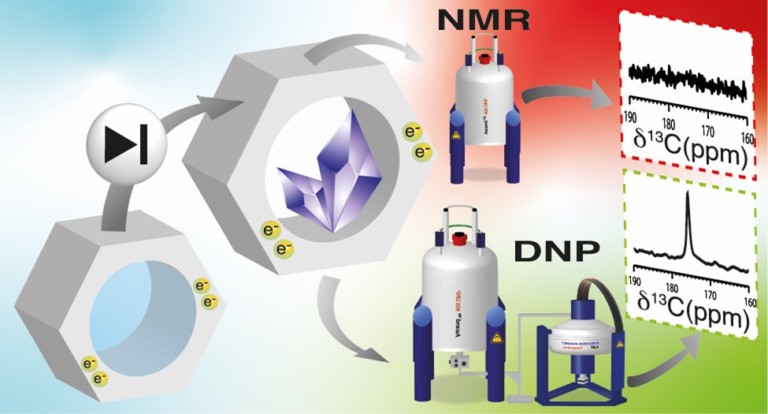Monitoring Crystallization Processes in Confined Porous Materials by Dynamic Nuclear Polarization Solid-State Nuclear Magnetic Resonance
Marie Juramy, Romain Chevre, Paolo Cerreia Vioglio, Fabio Ziarelli, Eric Besson, Stephane Gastaldi, Stephane Viel, Pierre Thureau, Kenneth D. M. Harris, Giulia Mollica,
Journal of the American Chemical Society, 143 6095-6103 (2021)
Establishing mechanistic understanding of crystallization processes at the molecular level is challenging, as it requires both the detection of transient solid phases and monitoring the evolution of both liquid and solid phases as a function of time. Here, we demonstrate the application of dynamic nuclear polarization (DNP) enhanced NMR spectroscopy to study crystallization under nanoscopic confinement, revealing a viable approach to interrogate different stages of crystallization processes. We focus on crystallization of glycine within the nanometric pores (7-8 nm) of a tailored mesoporous SBA-15 silica material with wall-embedded TEMPO radicals. The results show that the early stages of crystallization, characterized by the transition from the solution phase to the first crystalline phase, are straightforwardly observed using this experimental strategy. Importantly, the NMR sensitivity enhancement provided by DNP allows the detection of intermediate phases that would not be observable using standard solid-state NMR experiments. Our results also show that the metastable beta polymorph of glycine, which has only transient existence under bulk crystallization conditions, remains trapped within the pores of the mesoporous SBA-15 silica material for more than 200 days.





